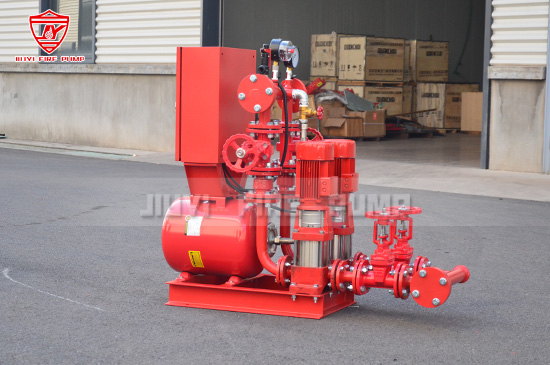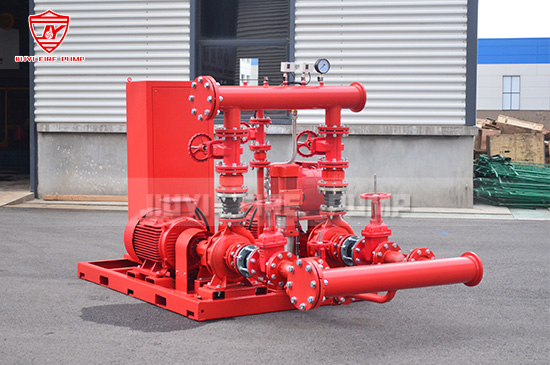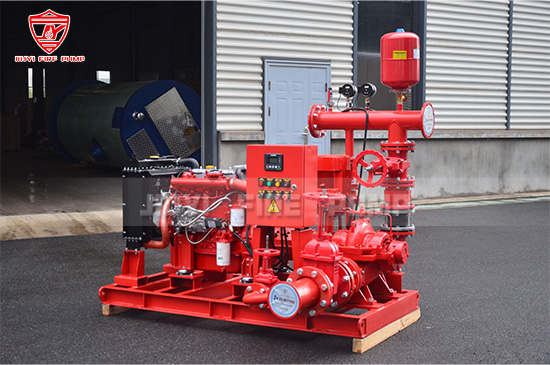Ensuring your fire pump operates at maximum efficiency is critical for maintaining fire protection systems’ reliability and compliance with safety regulations. Fire pumps are the heart of any firefighting system, supplying the necessary water pressure during emergencies. Regular testing ensures they perform as designed when a fire occurs, preventing failures that could result in catastrophic losses.
In this guide, we’ll explain how to test fire pumps, discuss key performance indicators, review NFPA testing requirements, and share expert tips to maximize efficiency and extend pump lifespan.

Fire pumps are designed to deliver reliable, high-pressure water flow during emergencies. Without regular testing, several risks arise:
System Failure During a Fire – A malfunctioning fire pump can prevent proper fire suppression.
Decreased Efficiency – Performance issues can go unnoticed without scheduled testing.
Regulatory Non-Compliance – NFPA 25 and local fire codes require routine fire pump performance testing.
Increased Maintenance Costs – Minor issues escalate when they aren’t detected early.
Testing is not just about compliance — it ensures your fire safety system works when you need it most.
Fire pump testing procedures are defined by the National Fire Protection Association (NFPA) Standard 25. Compliance with these guidelines ensures safety and protects property. The standard requires:
Weekly/Monthly Tests: For diesel and electric fire pumps.
Annual Flow Test: Measures the pump’s actual performance against its rated capacity.
Performance Benchmarks: Testing verifies pressure, flow, RPM, voltage, and current readings.
Following NFPA 25 ensures your fire pump system meets both safety regulations and insurance requirements.
There are several methods to evaluate fire pump efficiency and performance. Each test provides specific insights into pump health.
Conducted weekly or monthly depending on pump type.
The pump runs without water flowing through the discharge.
Checks for unusual noises, vibrations, leaks, and pressure stability.
Ensures that valves, controllers, and automatic starting mechanisms are functional.
Key Insight: If pressure fluctuates, it could indicate a leak, air pocket, or faulty check valve.
Conducted at least once a year as per NFPA 25.
Measures the pump’s flow rate at three points:
Rated Capacity Flow – Ensures the pump can meet its specified design flow.
150% Rated Flow – Confirms the pump can handle overload conditions.
Shutoff Head Pressure – Verifies maximum achievable pressure.
Procedure:
Connect a calibrated flow meter to measure water output.
Record discharge and suction pressures.
Compare actual readings to manufacturer specifications.
Uses pitot tubes, flow meters, or calibrated sensors.
Identifies drops in pressure or flow rate that could signal efficiency losses.
Helps detect obstructions, impeller wear, or air leaks.
For electric fire pumps: Inspect voltage, current, and motor performance.
For diesel fire pumps: Check battery voltage, fuel supply, engine temperature, and exhaust system.
Verifies automatic start sequences and transfer switch operations.
Ensures proper integration between fire pumps and monitoring systems.
Tests supervisory alarms, power failure alerts, and pressure drop notifications.
Critical for integration with building management and fire alarm systems.
Here’s a systematic approach to testing fire pumps for maximum performance:
Review manufacturer’s specifications and maintenance logs.
Ensure all isolation valves are open.
Check water supply availability.
Inspect casings, seals, and bearings for leaks or corrosion.
Look for signs of vibration, overheating, or unusual noise.
Test both automatic and manual start modes.
For diesel pumps, inspect fuel levels, oil pressure, and cooling systems.
Measure suction and discharge pressures.
Record flow rates at different operating points.
Compare results against baseline data.
Inspect motor current and voltage balance.
Check for worn bearings, impeller damage, or coupling misalignment.
Document results, noting any discrepancies.
Schedule corrective actions if performance falls below specifications.

Monitoring specific performance indicators ensures your fire pump operates optimally:
Rated Flow: Should match manufacturer’s specifications.
Total Dynamic Head (TDH): Indicates pumping power capability.
Net Pressure: Measured at rated and overload flows.
Electrical Load: Motor current should stay within design limits.
Vibration Levels: Excessive vibration suggests imbalance or mechanical wear.
Regular testing helps identify and correct issues early, including:
Impeller wear reducing pump efficiency.
Air leaks in suction lines causing cavitation.
Electrical imbalance affecting motor performance.
Diesel engine fuel contamination.
Pressure loss due to valve malfunctions or clogged strainers.
Prompt repairs extend pump life and ensure operational readiness.
Test Consistently: Follow NFPA 25 schedules strictly.
Maintain Accurate Records: Track all test results for trend analysis.
Use Calibrated Equipment: Ensure test instruments are properly maintained.
Train Your Team: Certified technicians improve testing accuracy.
Schedule Preventive Maintenance: Address minor problems before they escalate.
As a leading fire pump manufacturer, we provide more than just high-quality products. Our expertise ensures:
Proper system sizing and configuration.
Professional testing and commissioning support.
Compliance with NFPA 20, UL, and FM standards.
Long-term performance optimization and maintenance guidance.
By working with specialists, you ensure your system operates reliably under real emergency conditions.

Testing your fire pump regularly is the key to ensuring maximum efficiency, safety, and compliance. By following NFPA 25 guidelines and using the right testing methods, you can detect problems early, reduce downtime, and maintain a reliable fire protection system.
As a manufacturer of high-performance fire pumps, we help our clients design, test, and maintain systems that meet the most demanding safety standards. To learn more about our UL-listed, NFPA 20-compliant fire pumps and testing services, contact us today.